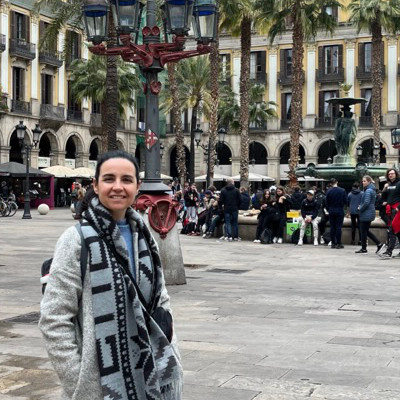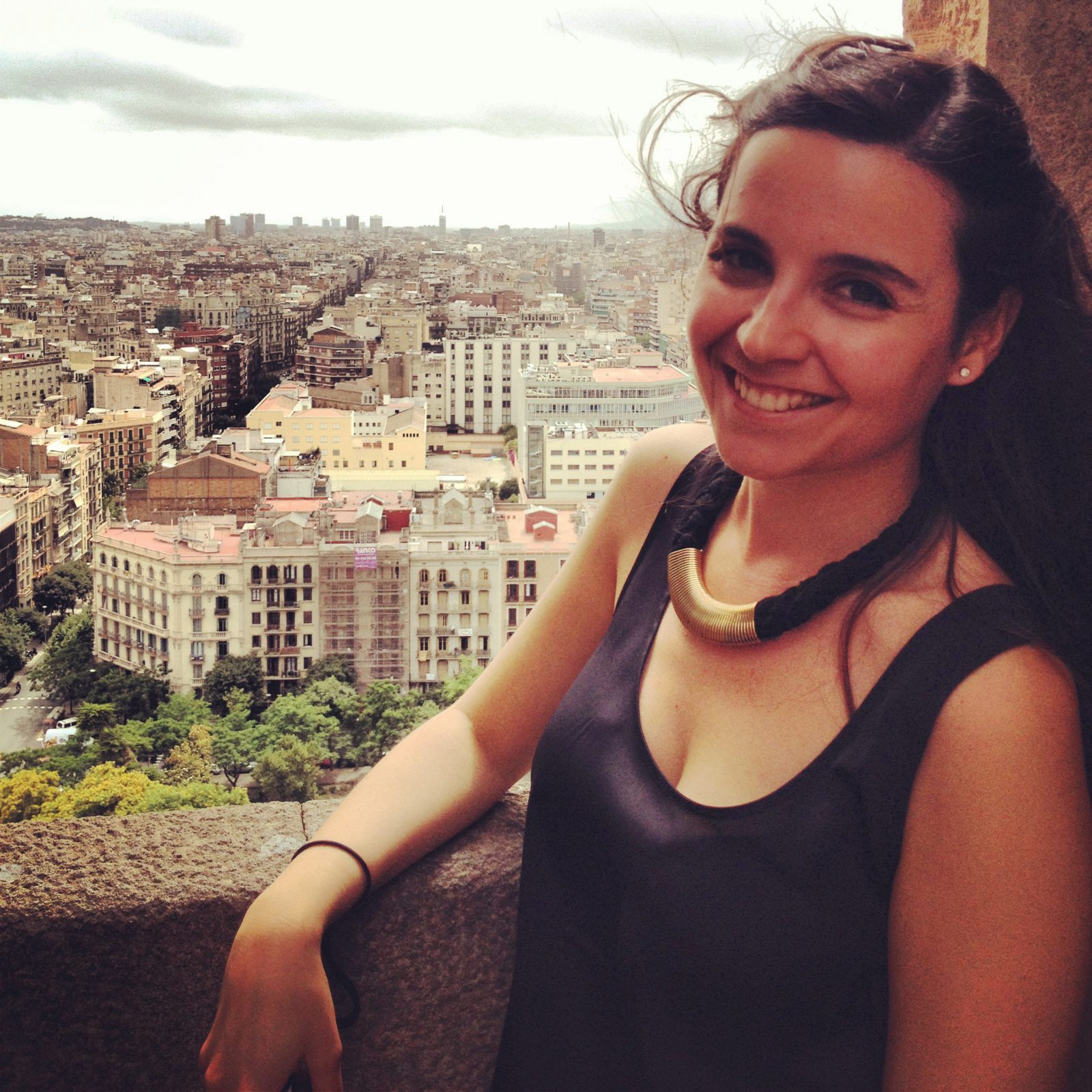Hidden behind Barcelona’s Cathedral, you’ll find the monumental Plaça del Rei. This site dates back to medieval times and was once of great importance as it was where the Royal Palace was located. Today, Plaça del Rei is one of the best examples of Barcelona’s medieval past, with its buildings housing several museums and exhibition spaces that you can visit, including the underground ruins of the Roman city Barcino!
What to See and Do at Plaça del Rei
Plaça del Rei is one of the most beautiful spots in Barcelona’s Gothic Quarter, loaded with history and stunning Gothic buildings. On this square, you’ll find the former Royal Palace (Palau Reial Major) with King Martí l’Humà’s watchtower, the old Lieutenant’s Palace (Palau del Lloctinent), and even the remains of the medieval executioner’s house! Beneath the square lie the remains of the Roman city Barcino.
A visit to Plaça del Rei today isn’t complete without a look inside the Museu d’Història de Barcelona (MUHBA Plaça del Rei), which explains the history of the city and grants access to the archaeological excavations under the square and the Palau Reial Major. Afterward, you can grab a drink at the L’Antiquari bar, which overlooks the square.
Former Royal Palace
The Palau Reial Major was the former residence of the Counts of Barcelona and later the kings of the Crown of Aragon. Hence the name of the palace “Palau Reial Major” (Great Royal Palace) and the square “Plaça del Rei” (King’s Square).
The imposing royal palace stands at the back of Plaça del Rei and is notably marked by its large staircase on the right and the large watchtower on the left. Although the base of the building has Visigothic and Romanesque elements, most of it is made in Catalan Gothic style as a result of renovations in the 13th century.
Inside the Palau Reial Major, the throne room Saló del Tinell, where receptions were held, and the 14th-century royal chapel of Santa Àgata, which contains a beautiful altarpiece by Jaume Huguet, shine. Both places can only be visited with a ticket from the MUHBA Plaça del Rei museum, which stands directly opposite the Palau Reial Major.
Martí l’Humà’s watchtower is a five-story tower; at the time, a true skyscraper, and many Barcelonans even saw it as the tallest building in the world.
Also interesting to see is the back of the palace and the chapel adjacent to Plaça De Ramon Berenguer El Gran, where you can see how it was incorporated into the old city walls.
The building that now houses the Museu Frederic Marès was also formerly part of the Palau Reial Major. The museum is located just behind the palace, near Plaça de Sant Iu, and is well worth a visit, partly because of its beautiful and tranquil courtyard.

Barcelona’s History Museum
Opposite the Palau Reial Major is the Casa Clariana Padellàs or Casa Padellàs, home to Barcelona’s historical museum. In this branch of the Museu d’Història de la Ciutat, named MUHBA Plaça del Rei, lie the archaeological remains of Roman Barcelona excavated in the square, and you can learn how the city evolved from a Roman colony to the most powerful city in the Mediterranean during the Middle Ages.
Interesting to note is that Casa Padellàs was not originally part of Plaça del Rei. It was moved here stone by stone during the construction of Via Laietana to save it from demolition. It was during the relocation of Casa Padellàs that remains of the ancient Roman Barcino were found, and in 1943 it became a museum.
Looking through the museum’s windows, you can catch a glimpse of the Roman ruins that formed the city of Barcino, but the best experience is, of course, to see them up close. By purchasing tickets for this museum, you also gain access to the Palau Reial Major and its two greatest jewels, the Saló del Tinell and the chapel of Santa Àgata.

Former Lieutenant’s Palace
To the left of the Palau Reial Major lies the former Lieutenant’s Palace, the Palau del Lloctinent, a magnificent 16th-century building with a lush courtyard and various Renaissance and Gothic details, such as gargoyles and a round watchtower. But the biggest attractions are the beautiful wooden ceiling atop the stairs and the Sant Jordi door, connecting the Palau del Lloctinent to the Royal Palace. The palace has served multiple purposes, the last being as the archive of the Crown of Aragon. Today, the courtyard of the Palau del Lloctinent is open to the public, and you can walk up to the first floor to enjoy all its beauty. Additionally, events and exhibitions related to the archive are regularly held there.

The Executioner’s House
In the past, counts and kings walked the steps of the Palau Reial Major, but the executioner’s house was also located on this square. Between the chapel of Santa Àgata and the MUHBA, we see a glass door with a small balcony above it. This was the executioner’s house in the Middle Ages. A figure no one wanted to live next to but whom the kings found hard to part with as they carried out their orders.
Since the executioner had trouble finding a place to live, it was decided to give him a place where he wouldn’t bother anyone, somewhere between the city walls and near the courts. And so, we still have traces of the executioner’s house here.
Eduardo Chillida Sculpture
Since 1986, a cast iron sculpture by the famous Spanish sculptor Eduardo Chillida can be found in Plaça del Rei. The construction, called Topos V, was inspired by the medieval past of Barcelona, which reached its peak here at Plaça del Rei. The round elements at the top of the sculpture relate to the medieval arches, and you can also find the B of Barcelona in it.
Bar L’Antiquari
A super nice spot to sit and enjoy the view over Plaça del Rei is L’Antiquari, located on the corner of Carrer de la Pietat. Open from noon until late at night, this bar spans three floors in a very old building and is very cozily decorated, immediately bringing you into old times. In the summer, they place a terrace outside where you can relax.

Events at Plaça del Rei
Although Plaça del Rei is generally a very quiet place, events are occasionally organized there. From Catalan festivals with music, dance, and human towers, to Christmas concerts. Special events and guided tours by the MUHBA Plaça del Rei are also regularly organized.
Visiting the MUHBA Plaça del Rei
The visit to the MUHBA Plaça del Rei starts at Casa Padellàs, where the museum’s entrance is located, and follows a route under the square, where more than 4,000 square meters of archaeological excavations from Roman times are. The tour then passes by the Palau Reial Major, where you can admire the Gothic throne room Saló del Tinell and the beautiful chapel of Santa Àgata, and ends on the steps of Plaça del Rei overlooking the square.
Tickets MUHBA Plaça del Rei
To view the underground ruins and some of the buildings that form the monumental ensemble at Plaça del Rei, you need tickets. The tickets are provided by the MUHBA Plaça del Rei museum and are available online, among other places. If you buy your tickets online, you get an extra discount and avoid the queues at the box office. Tickets from €6.65 per person (instead of €7) including an audio guide. Children up to 16 years old have free admission.
Good to know: both the Palau del Lloctinent and the courtyard of the Museu Frederic Marès are free to visit. Unfortunately, the watchtower Martí l’Humà is not open to the public.

History of Plaça del Rei
The area now known as Plaça del Rei was once part of the farmyard of the Catalan counts who lived in the Palau Reial Major. They allowed the people to use their land to hold a market and as a meeting place. The palace was used as a royal residence from the 13th to the early 15th century until the Crown of Aragon joined the Kingdom of Castile, and all institutions moved to Madrid. There are traces suggesting that the royal palace existed as early as the 5th century when the Visigothic King Athaulf ordered the construction of a royal palace.
The royal palace and the surrounding buildings at Plaça del Rei enclose a harmonious and peaceful square still steeped in the city’s history. Over the years, the monumental ensemble at Plaça del Rei has witnessed many events. From an executioner who couldn’t live anywhere else in the city and thus was given a house here, to an attempted assassination of King Ferdinand on the steps to the palace in 1492. This was also the place where the Catholic Monarchs are said to have received the explorer Christopher Columbus in 1493 after his discovery of America.
Since 1943, the MUHBA has been located here, partly because of the archaeological finds from ancient Barcino beneath the square. Until 1956, one of the four pillars of the old Roman temple of Augustus in Carrer Paradís was visible in the square. This was replaced in 1986 by Eduardo Chillida’s steel sculpture Topos V, which contrasts sharply with the medieval surroundings yet somehow fits. Whether visiting this square in the evening or during the day, a visit to Plaça del Rei remains a unique experience.
How to Get to Plaça del Rei
Plaça del Rei is located in the Gothic Quarter, behind the Cathedral and very close to Plaça Sant Jaume. It can be easily reached from the Jaume I (L4) metro station. There are two entrances to Plaça del Rei: one via Carrer del Veguer, which can be accessed via Baixada de la Llibreteria, and the other goes through Carrer de la Pietat, running behind the Cathedral.
Useful information
Price: You can visit Plaça del Rei for free.
Tickets are required to view the underground ruins and some of the buildings.
Opening Hours: The MUHBA Plaça del Rei is open from Tuesday to Saturday from 10:00 AM to 7:00 PM and on Sunday from 10:00 AM to 8:00 PM (closed on Monday).
Address: Plaça del Rei 08002 Barcelona
Public Transportation:
Metro: Jaume I (L4)
Bus: 47, 120, N8, N28, N70, V15, V17


